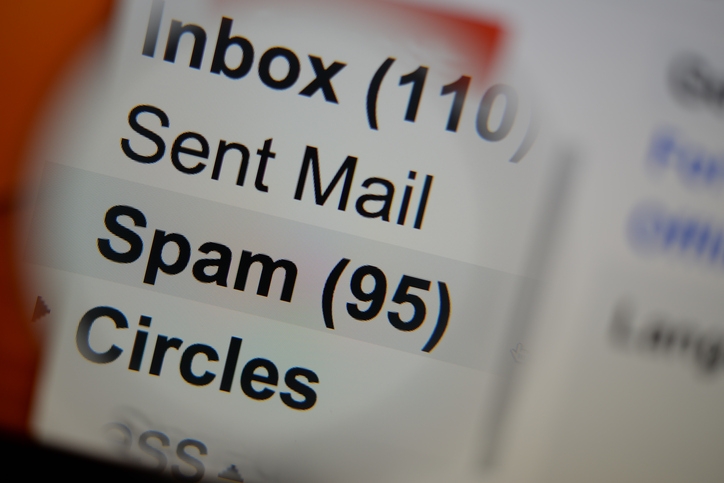E-mail Marketing Is Dead (or So They Say)

The Merriam-Webster Dictionary definition of “dead” is either a) No longer alive or b) Very tired. Anyone who spends time researching marketing trends has heard the rumor that e-mail marketing is dead, or at the very least, dying. Presumably when people say e-mail marketing is dead, they are not saying e-mail is no longer a viable marketing tool, but instead they’re indicating e-mail marketing is very tired. They’re right. Our inboxes are cluttered and it’s hard to distinguish between valuable marketing and worthless junk.
E-mail marketing isn’t dead, it’s just tired. More than that though, the services that provide us the ability to read our e-mails—Gmail, Outlook, Yahoo, AOL, Apple Mail—are beginning to employ machine learning to help us presort our e-mail. E-mail marketing is old, tired and crotchety. It’s a carnival barker standing on a milk crate yelling, “Hurry, hurry, hurry, step right up, step into the tent and buy your mortgage from me today.” Consumers are too smart for that now. Consumers don’t want to be told what to do, they want to be engaged; they want to have a conversation about their lives, their needs, their fears, their desires.
Those who say e-mail marketing is dead or dying claim social media, pay-per-click, banner ads, and even text marketing will precipitate the eventual demise of e-mail marketing. However, when you look at the numbers and the technology opportunities available to e-mail marketers, it’s clear: E-mail marketing is certainly not dead. It’s not even dying. E-mail marketing is evolving from the carnival barker pitching a new act to an engaging personalized conversation built on collaboration and timely delivery of appropriate opportunities to help consumers become happily involved with products and services.
The Holy Grail of marketing is creating a segment of one: To market as broadly as possible while connecting on a highly personalized level, so that it feels less like a pitch and more like a conversation. Contrary to the rumors, e-mail marketing is perfectly positioned to be an essential component of the conversation between marketer and consumer.
History repeats itself
Interestingly, e-mail marketing is suffering the same fate of the marketing medium it supplanted. It’s handling the evolutionary pressures more effectively, but the pressures are the same: Oversaturation, alternative mediums, and boring, repetitive content.
Print marketing was once the darling of the direct marketing world. In May 2003, the Global Mail Project Institute for the Future wrote a report for the President’s Commission on the United States Postal Service. The report looks like a mix between science fiction and a romance novel. It acknowledges the possibility that email and other forms of digital advertising would have relatively nominal impact on print marketing spending. The report was wrong; print marketing has suffered cataclysmically. It was right about the future of print marketing though: Highly segmented, higher quality, lower costs, and personalized. What it didn’t predict is print marketing’s fall from grace would be, in part, reversed by the advent of technologies that make even a postcard in your mailbox feel like a personal message; correspondence that will elicit a conversation. Instead of a generic postcard with an offer to refinance, it’s a series of highly targeted marketing pieces providing local offers, local market data and even highly personalized offers based on an amalgamation of credit, housing, and rate data.
Print marketing isn’t dead either … it’s evolving. Its evolution has been slow and the ravages of time have been cruel; e-mail marketing would suffer the same fate if not for the exciting new technologies emerging.
Keep your e-mail marketing alive
Model the mind and match it with technology. Understanding consumer behavior and the underlying technology behind e-mail are essential for keeping your e-mail marketing alive. If that sounds difficult, don’t worry, the software industry is replete with services who take complex tasks and make them easy to understand and implement. Is all this effort and investment worth it? The answer is an unadulterated, yes! Depending on the report you read, you’ll see ROI numbers between 300-3,800 percent for e-mail marketing. It’s an incredibly cost-effective marketing medium and, when done right, is incredibly powerful, too.
When you think about marketing, think about it in terms of having a conversation. If you were at a business event and saw a previous customer, you wouldn’t walk up and immediately offer him a mortgage refinance product. Instead, you would start a conversation. During that conversation, given the nature of your relationship, you might discuss real estate and mortgage topics.
The more you know about someone, the easier it is to have a conversation with them, right? Think about marketing opportunities you will have in the future with the new clients you’re creating today. When you close a loan with a customer, you’re not only serving their immediate needs but also creating an incredibly detailed customer profile. The information you have at your fingertips offers a lifetime of relevant, timely, personal conversation starters. Couple the data with the ability to model e-mail communications around consumer behavior, and you’ll find e-mail marketing will continue to be one of the most powerful tools available to marketers.
E-mail reputation, deliverability, and avoiding the dreaded Google “Promotions” tab or Outlook “Clutter” folder, is a mixture of art and science. To keep your e-mail marketing alive, you have to use services which understand how e-mail clients (Gmail, Apple Mail, Outlook, etc.) automate the marginalization of e-mail marketing. There are no less than 200 million e-mail marketing services available to marketers. Okay, that may be a hyperbolic amount, but the point is there are a lot of choices for e-mail marketing. In fact, any respectable CRM or marketing platform has some form of e-mail marketing; it’s a requirement to remain relevant. To ensure your e-mail marketing doesn’t “die,” you have to start thinking about e-mail as an evolving, complex ecosphere requiring specialized skills. If you’re buying a CRM that offers e-mails, ask them about their e-mail reputation. Ask them what efforts they take to avoid spam traps. Have them share with you their subject line testing. Do they throttle their delivery and automate data segmentation to mimic conversational e-mail correspondence in an attempt to avoid the dreaded “Promotion” or “Clutter” inboxes of Gmail and Outlook? Do they provide feedback and help to create or even natively deliver behavioral e-mail marketing campaigns?
E-mail marketing is not only the oldest digital medium, it’s the most prolific, has the most upside (there are 4.3 billion e-mail addresses), is perfectly situated to integrate data mining, can provide immediate feedback and automated responses, and remains the most cost-effective marketing medium available.
E-mail marketing is generally not dead, it’s not tired, it’s not boring, it’s not a carnival barker asking you to step right up. If you treat your e-mail marketing as checking a box and hoping the “spray and pray” method works for you, then yes, your e-mail marketing will die. Get serious about breathing life into your e-mail marketing effort; it promises to deliver.

Brent Emler is director of sales and marketing at Velma.com, a customizable marketing software provider exclusive to the mortgage industry. He may be reached by e-mail at [email protected].
This article originally appeared in the May 2016 print edition of National Mortgage Professional Magazine.





